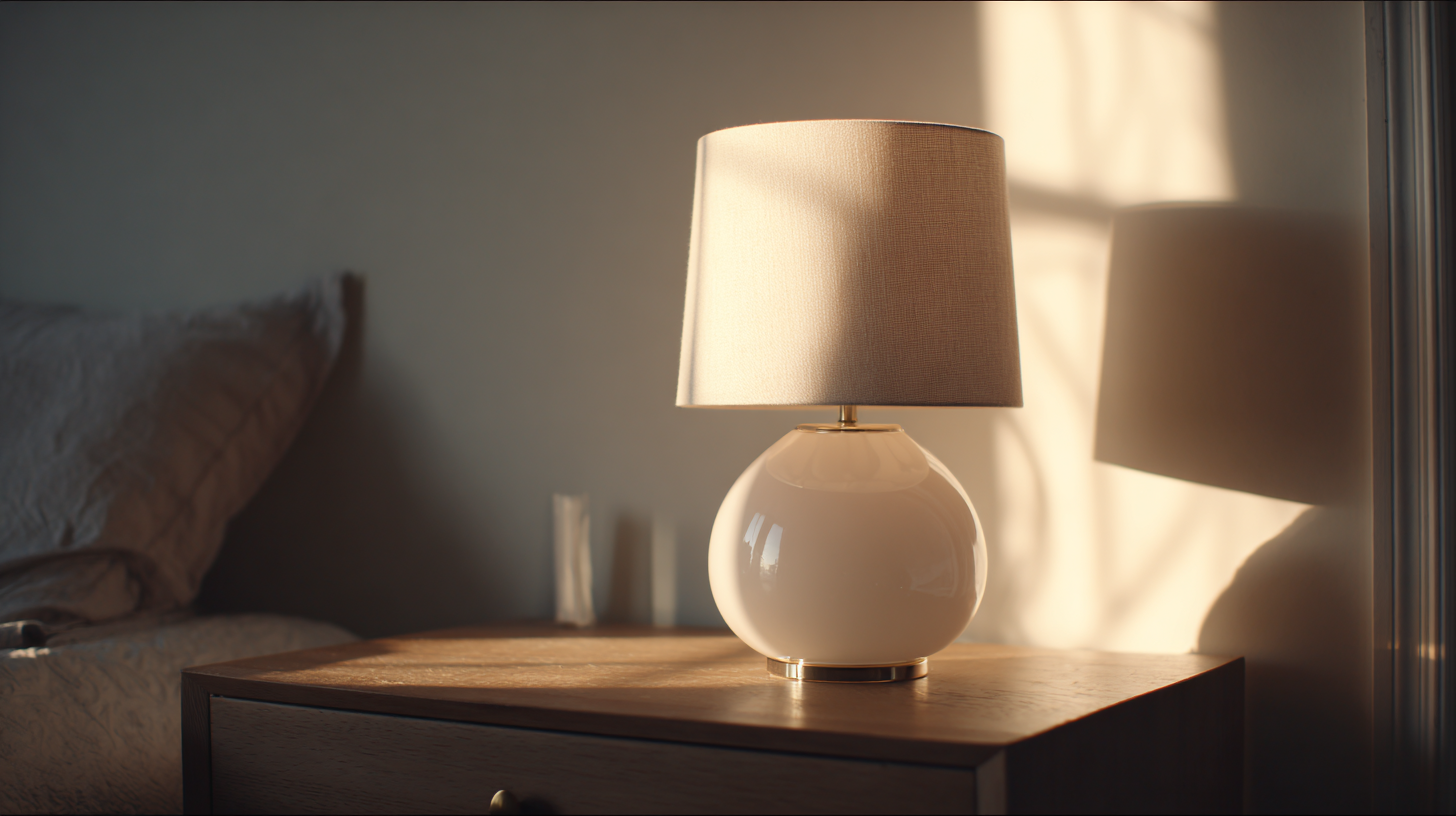Navigating Export Certifications for Best Morning Lamp How to Ensure Compliance and Market Success
In the ever-evolving landscape of global trade, ensuring compliance with export certifications is crucial for the success of products like the morning lamp. As consumers increasingly seek quality and safe home lighting solutions, manufacturers must navigate the intricacies of certification processes to not only meet regulatory standards but also to appeal to a discerning market.

This ultimate guide aims to equip businesses with essential insights into the certification landscape for morning lamps. By understanding the requirements across different regions and the implications of compliance—ranging from safety standards to environmental considerations—manufacturers can position their morning lamps for optimal market entry and success.
Join us as we explore the key steps and best practices to achieve certification and thrive in the competitive lighting industry.
Understanding Export Certifications: An Overview for Morning Lamp Manufacturers
When it comes to manufacturing the best morning lamps, understanding export certifications is crucial for compliance and market success. Many countries have established stringent regulations to ensure that products meet safety and environmental standards. For instance, according to a report by MarketsandMarkets, the global lighting market is projected to reach $160 billion by 2025, emphasizing the importance of adhering to certification processes to capitalize on this growth.
 Morning lamp manufacturers must familiarize themselves with regulations such as the CE marking in Europe, which signifies compliance with health, safety, and environmental protection standards.
Morning lamp manufacturers must familiarize themselves with regulations such as the CE marking in Europe, which signifies compliance with health, safety, and environmental protection standards.
Moreover, exporting products without the necessary certifications can lead to significant financial penalties and loss of market access. Research by IBISWorld indicates that non-compliance can cost companies up to 15% of their annual revenue due to fines and product recalls. Thus, manufacturers should engage with recognized certification bodies and invest in thorough testing and documentation processes to ensure all products are compliant with international standards. This proactive approach not only mitigates risks but also builds brand trust among consumers who prioritize safety and sustainability in their purchasing decisions.
Key Export Certification Requirements for Lighting Products
When venturing into the export market for lighting products such as the Best Morning Lamp, understanding key export certification requirements is crucial for ensuring compliance and successful market entry. Different countries have varying standards regarding safety, energy efficiency, and environmental impact, creating a complex landscape for exporters. It is essential to familiarize yourself with certifications like CE marking in Europe, UL listing in the United States, and the CCC mark in China, which signify adherence to rigorous quality and safety protocols.
Conducting thorough research on the specific requirements for each target market can save time and resources. Manufacturers should also focus on obtaining necessary test reports from accredited laboratories, as these are often prerequisites for certification. Additionally, staying informed about any changes in regulations or new standards can help your product stay competitive and compliant. By prioritizing these certification requirements, exporters can build trust with consumers and distributors while enhancing their product's marketability on a global scale.
Navigating Export Certifications for Best Morning Lamp
| Certification Type | Description | Region | Key Requirements |
|---|---|---|---|
| CE Marking | Indicates conformity with health, safety, and environmental protection standards. | European Union | Technical documentation, risk assessment, compliance testing. |
| UL Listing | Demonstrates compliance with North American safety standards. | United States, Canada | Testing for safety, performance, and electrical standards. |
| FCC Certification | Ensures electronic devices do not emit harmful electromagnetic interference. | United States | Testing for emissions, labeling, and user manual requirements. |
| RoHS Compliance | Restricts the use of specific hazardous materials in electrical and electronic products. | European Union | Declaration of conformity, material testing, record keeping. |
| Energy Star | Indicates energy efficiency and environmental impact. | United States, Canada | Product testing, energy efficiency guidelines adherence. |
Step-by-Step Guide to Obtain Necessary Certifications
When navigating export certifications for your best morning lamp, it's crucial to understand the necessary steps to ensure compliance and market success. Obtaining the correct certifications involves a detailed process that typically requires engaging with both federal and state regulatory bodies. For instance, products designed for export must often comply with international standards governing safety and environmental impact. According to a recent industry report, approximately 30% of non-compliance issues stem from inadequate certification knowledge, highlighting the importance of education in this area.
**Tips:** Start by researching the specific certification requirements for your product in targeted markets. Engage with exporting consultants or industry boards to clarify the steps needed, which may include technical documentation, tests, and application fees.
Additionally, streamline your process by creating a checklist that includes vital certifications such as ISO standards or product safety marks. This can significantly reduce the likelihood of delays and help you track your progress effectively. Remember, certification not only aids in regulatory compliance but also builds customer trust, essential for market success.
Navigating Export Certifications for Best Morning Lamp
This bar chart represents the various types of certifications required for exporting lighting products and the percentage of companies compliant with each certification type. Ensuring compliance with these certifications is crucial for market success.
Common Challenges in Export Certification Compliance
Navigating export certifications can be a daunting task for manufacturers of morning lamps, especially when it comes to ensuring compliance with various regulations. One of the common challenges in export certification compliance is the complexity of different certification requirements across countries. Each market may have specific standards that address safety, energy efficiency, and environmental impact, making it essential for exporters to stay informed about the latest regulations. This can lead to confusion and misinterpretation, resulting in unnecessary delays or even penalties.
Another significant hurdle is the documentation process. Exporters must gather extensive paperwork, including test reports, compliance certificates, and product specifications, to satisfy regulatory bodies. Inadequate or improperly completed documents can result in shipment rejections or increased scrutiny from customs authorities. Consequently, it is crucial for businesses to establish a robust documentation practice and perhaps work with experienced consultants who can help navigate these intricate compliance landscapes efficiently. Investing in training and resources to understand these challenges can ultimately facilitate smoother market entry and enhance the success of morning lamp exports.
Best Practices for Marketing Certified Morning Lamps Effectively
When it comes to marketing certified morning lamps effectively, understanding your target audience is crucial. Research shows that 64% of consumers are influenced by product certifications when making purchasing decisions (Nielsen, 2021). This indicates that highlighting compliance with export certifications can significantly enhance the perceived value of your morning lamps. Emphasizing certifications not only builds trust but also connects with environmentally conscious consumers seeking products that align with their values.
Incorporating clear information about certification on product labels and marketing materials can further enhance visibility. A report from the International Trade Centre reveals that products marketed with certification claims see a 30% higher conversion rate than those without (ITC, 2020). Social media platforms also serve as effective channels for promoting certified lamps. Engaging content that outlines the benefits of certification, along with customer testimonials, can drive engagement and ultimately boost sales. Leveraging partnerships with eco-friendly influencers can amplify your reach, creating a community around your product that resonates with certification-conscious shoppers.

